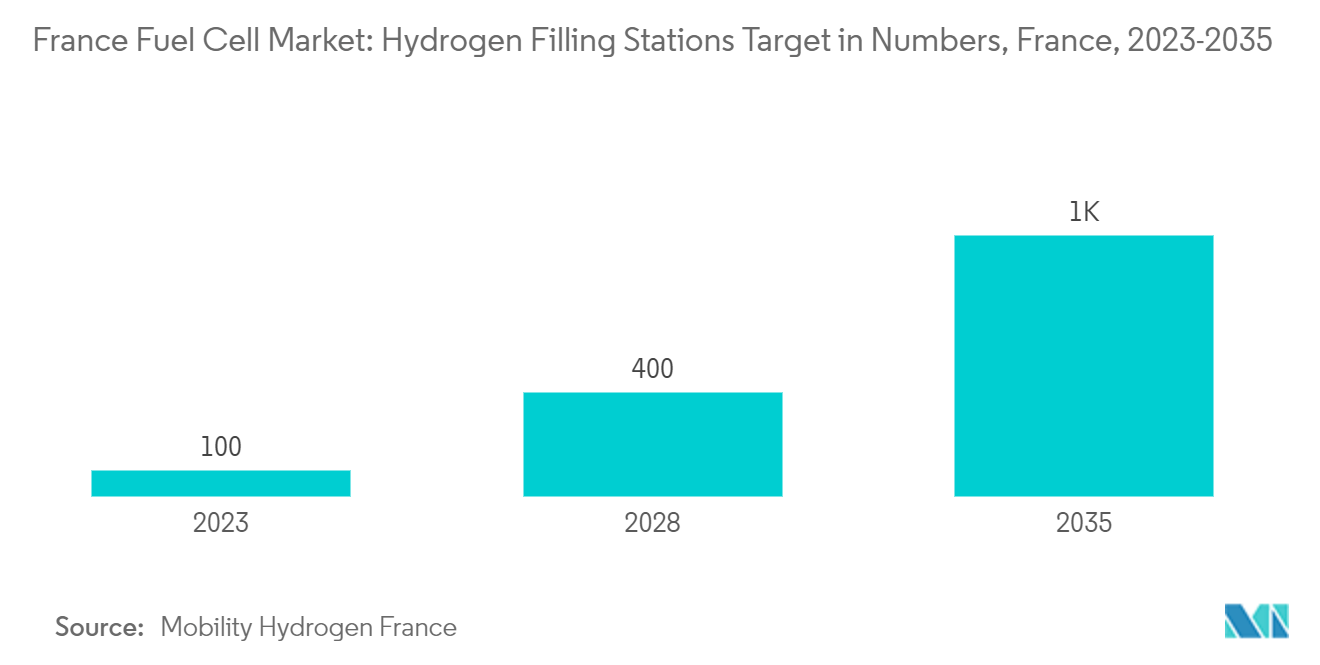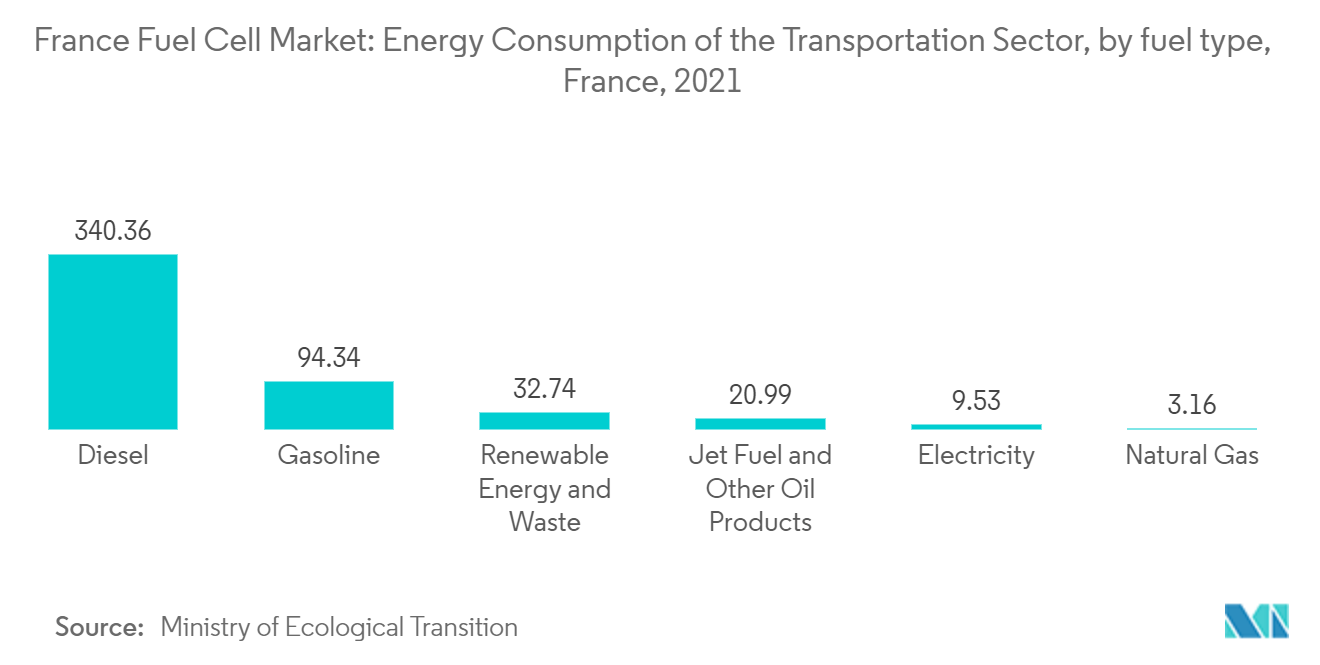Market Trends of France Fuel Cell Industry
This section covers the major market trends shaping the France Fuel Cell Market according to our research experts:
Increasing Hydrogen Filling Stations
- The government is planning to ensure sufficient availability of hydrogen in France at a competitive cost compared to the cost of energy for a diesel vehicle (i.e., less than 7 EUR/kg). Such incentives are expected to supplement the demand for fuel cells in France in the long run.
- In late 2019, France issued the Mobility Orientation Law, which aims to decarbonize land transport by 2050, as well as formulated measures to reach the goal. One of the measures is to phase out the sale of vehicles that directly emit CO2 from 2040. Therefore, the demand for zero-emission vehicles, such as fuel cell vehicles that deploy PEM, is expected to increase during the forecast period.
- Renault SA and Plug Power Inc. signed an MoU in January 2021 to launch a 50-50 joint venture based in France by the end of the first half of 2021, targeting over 30% share of the fuel cell-powered light commercial vehicle (LCV) market in Europe.
- The government of France, under its new strategy Plan Hydrogène, aims to invest heavily in hydrogen and fuel cell technology. In October 2021, France announced its plans to invest EUR 30 billion to test hydrocarbon technologies and for R&D purposes by 2030. The government is planning to install 100 hydrogen filling stations by 2023. By 2028, this number is expected to increase to 400-1,000 hydrogen filling stations.
- Therefore, factors such as increasing hydrogen filling stations and efforts to incorporate fuel cell technology in transportation and other applications are expected to drive the French fuel cell market during the forecast period.

Transportation Sector to Dominate the Market
- The rising environmental issues, such as climate change and low air quality, due to significant growth in the regional transportation sector and high fossil fuel consumption have generated the need for clean energy sources.
- Fuel cells generate zero emissions and contribute to eliminating greenhouse gases. A fuel cell majorly uses hydrogen or methanol, thus reducing economic dependence on oil and gas while optimizing energy security. Rising environmental concerns and growing infrastructure related to hydrogen refueling stations are likely to support the vehicular fuel cell market's growth over the forecast period.
- The transportation sector accounted for more than half of the market share in 2021. It is expected to continue its dominance in the coming years as well. The French government is focusing on clean energy usage in the transportation sector, which may create significant demand for fuel cell technologies.
- In 2021, diesel was the most consumed fuel in the French transportation sector, at over 340 TWh of energy. In general, non-renewable fuels were the largest energy source in the sector, while renewables and electricity only accounted for around 42 TWh of energy used.
- The French fuel cell market is propelled by the venture capital investments by private organizations and those involved in the adoption and implementation of fuel cells in the country. The world's first hydrogen-powered bus rapid transit (BRT) system was deployed in the city of Pau in the south of France.
- Keolis, a French public transport operator, has worked in partnership with local transport operators on the project launch and is providing technical assistance for the operation of eight additional hydrogen-powered BRTs.
- In July 2022, Paris authorities announced their plans to launch tenders for about 47 fuel cell buses with deployment by the end of 2023 in the Ile-de-France region. The procurement requires an investment of about EUR 48 million. Seven hydrogen buses have already been deployed in the region in the framework of a pilot launched in 2019.
- Hence, the transportation sector is expected to dominate the market due to the increasing technological innovations and rising private player involvement.


